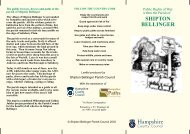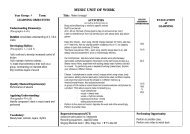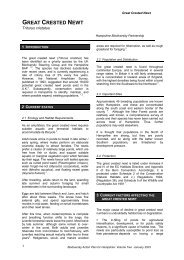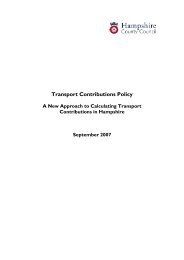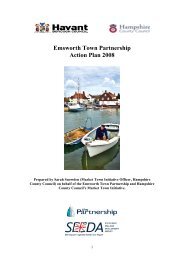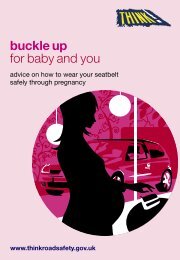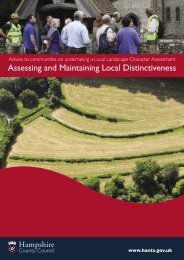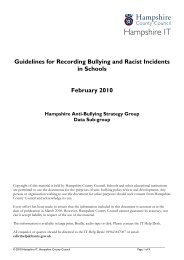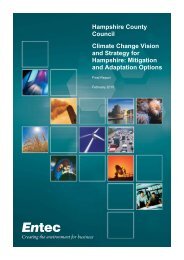erf planning.indd - Hampshire County Council
erf planning.indd - Hampshire County Council
erf planning.indd - Hampshire County Council
- No tags were found...
You also want an ePaper? Increase the reach of your titles
YUMPU automatically turns print PDFs into web optimized ePapers that Google loves.
Although some public engagement processes were undertaken, these were almostentirely counter-productive and the local newspaper ran a very effective “Ban theBurner” campaign based on the above points. The situation was not helped by thecontractor’s apparent lack of understanding of the community concerns and inability torespond in an appropriate way – for example an artist’s impression of the height of thenew plant was found to be misleading.The pressure on the <strong>County</strong> <strong>Council</strong> was so intense that following submission of the<strong>planning</strong> application for the plant, and despite the applicant being the <strong>Council</strong>’s owncontractor, it was obliged to refuse the application and recommend that a strategy bedeveloped based on increased recycling and smaller, well designed energy recoveryfacilities. Although in hindsight this has worked to <strong>Hampshire</strong>’s advantage, at the timeit left the <strong>County</strong> <strong>Council</strong>’s entire waste strategy in collapse. Landfi ll was running outand the four ageing incinerators were facing the upcoming (1996) change in emissionsregulations which were inevitably going to close them down.Community engagementFollowing the failure of the “Portsmouth Burner”, a survey of key opinion formers andobjectors was carried out. The fact that the <strong>County</strong> <strong>Council</strong> had decided to undertakepublic consultation after a fi rm proposal had been adopted was found to have beena major source of frustration. The survey also found there was much communitywillingness to help fi nd a solution – provided that <strong>Hampshire</strong> <strong>County</strong> <strong>Council</strong> did notenter into consultations having already made a decision.The <strong>County</strong> <strong>Council</strong> recognised that if it was going to address the looming waste disposalcrisis it had to rethink its whole approach to the subject, and moreover, it had to have somepublic acceptance and political endorsement of this approach in both strategic and landuse <strong>planning</strong> terms.The approach was reformed accordingly, based on three parallel but related processes.• Engage the public in a “bottom-up” process about the issues it faced and thealternative approaches to solving them.• Develop an integrated approach whereby waste treatment was founded on the wastemanagement hierarchy, i.e. recycling and composting fi rst and foremost, leaving theresidual waste stream to be treated in a manner yet to be decided. It became clearthat if this was to work, the <strong>County</strong> <strong>Council</strong> would have to work in partnership with thedistrict councils as waste collection authorities.



